| Columns Retired Columns & Blogs |
Excellent review! LG.
Beautiful pics as well.
I measured one of the Mark Levinson No.536 monoblocks (serial no.1250) with my Audio Precision SYS2722 system (see the January 2008 "As We See It"). Before doing any testing of a power amplifier, I precondition it by running it at one-third its specified power into 8 ohms for 60 minutes. (This power level results in the highest thermal stress on the output devices of an amplifier having a class-B or -AB output stage.) After an hour driving 133W into 8 ohms, the temperature of the No.536's heatsinks was fairly hot, at 114.8°F (46°C), and its top panel was warm, at 101.3°F (38.5°C).
The voltage gain into 8 ohms for both the balanced and unbalanced inputs was 25.6dB, and both inputs preserved absolute polarity, the XLR jack being wired with pin 2 hot. The input impedance at low and middle frequencies was extremely high, at 240k ohms 360k ohms balanced, and though at the top of the audioband this impedance dropped to 250k ohms balanced, these are still very high.
The output impedance was low, at 0.1 ohm at 20Hz and 1kHz, rising slightly to 0.13 ohm at 20kHz. The response with our standard simulated loudspeaker varied by just ±0.1dB (fig.1, gray trace). The amplifier offered a wide small-signal bandwidth, the output into 8 ohms (blue trace) not reaching –3dB until 195kHz. Consequently, the No.536's reproduction of a 10kHz squarewave (fig.2) featured very short risetimes and, commendably, no overshoot or ringing was apparent.
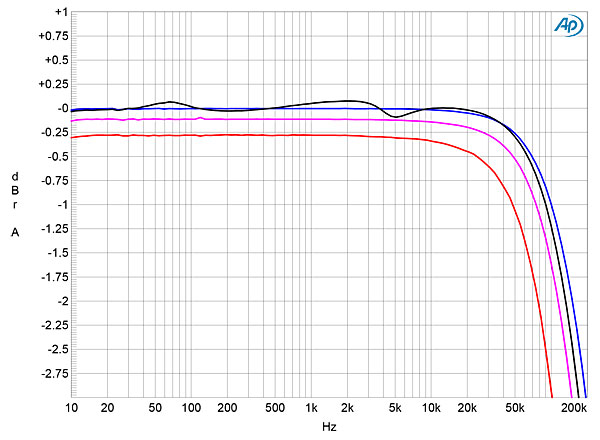
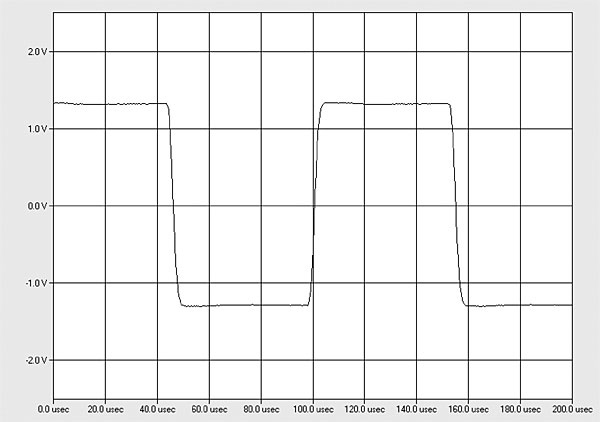
Measured with the input shorted to ground, the Mark Levinson amplifier offered a wideband, unweighted signal/noise ratio of 71dB, ref. 1W into 8 ohms. This improved to 96dB when the measurement bandwidth was restricted to 22Hz–22kHz, and to 99.3dB when the reading was A-weighted. This is a quiet amplifier, and while spectral analysis of its noise floor as it reproduced a 1kHz tone at 1W into 8 ohms (fig.3) revealed some supply-related spuriae, these were all at a very low level.
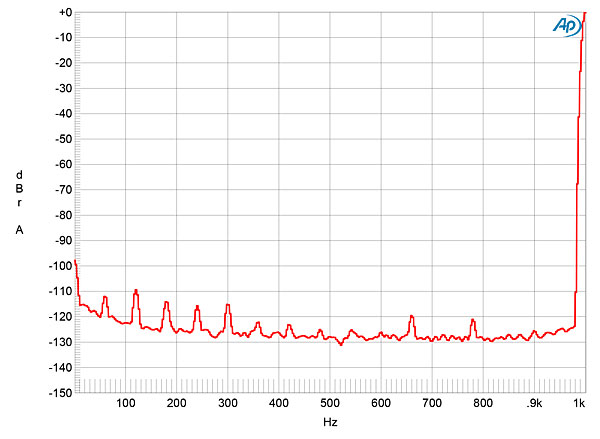
The Mark Levinson is also an extremely powerful amplifier. With clipping defined as when the THD+noise reaches 1%, the No.536 clipped at 510W into 8 ohms (27.1dBW, fig.4), compared with the specified maximum output into 8 ohms of 400W (26dBW). It clipped at 800W into 4 ohms (26dBW, fig.5), and at 1050W into 2 ohms (24.2dBW). I don't hold the wall voltage constant in these clipping tests, as I feel that is more representative of how an amplifier behaves in normal use. The wall voltage at the 20A circuit that feeds my test lab dropped from 122.8V to 119.5V with the No.536 clipping into 4 ohms, and to 117V with it clipping into 2 ohms. With the wall voltage held constant, the amplifier would deliver even more power into very low impedances! The shape of the traces in these two graphs puzzled me: Although the level of THD+N is extremely low at low powers, it starts to rise earlier than I expected, and the amplifier appears to become more linear at moderately high powers before it starts to clip. I suspect that this behavior is due to there being only a moderate degree of negative feedback.
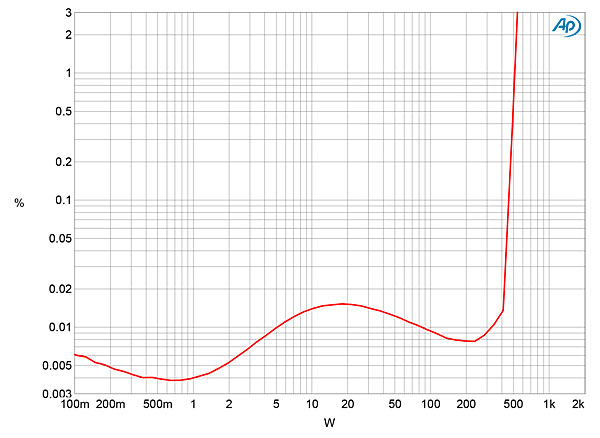
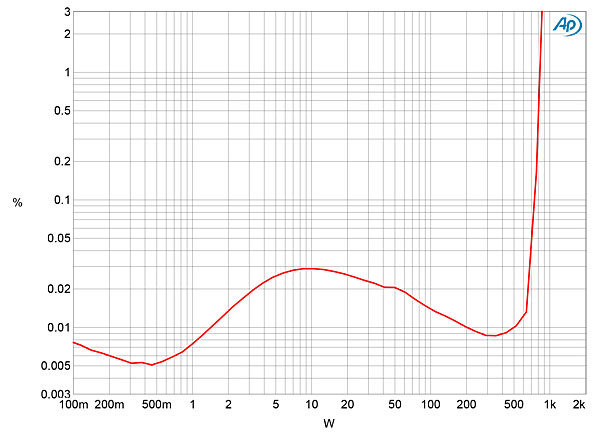
The THD+N percentage at 28.3V—which is equivalent to 100W into 8 ohms, 200W into 4 ohms, and 400W into 2 ohms—was very low at low and middle frequencies (fig.6). Though the THD rises at frequencies above 2kHz, it still lies below 0.08% at 20kHz. With a 1kHz signal, the distortion signature is odd-order in nature (fig.7), with the second harmonic around 12dB lower in level than the third (fig.8). At low frequencies, however, the higher-order harmonics reach the same level as the third, and the even-order products disappear (fig.9). However, it is fair to note that all the distortion components lie at or below –86dB (0.005%). And while the mix of harmonics varies with frequency, it remains constant with output power, which some commentators feel correlates with good sound quality. When I tested the No.536 with an equal mix of 19 and 20kHz tones, the peak level equivalent to 200W into 4 ohms (fig.10), while some higher-order intermodulation products are visible, almost all lie below –90dB (0.003%), and the second-order difference product is at –100dB (0.001%).
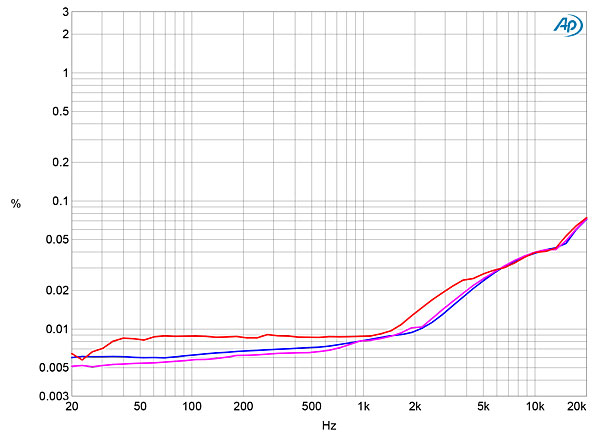
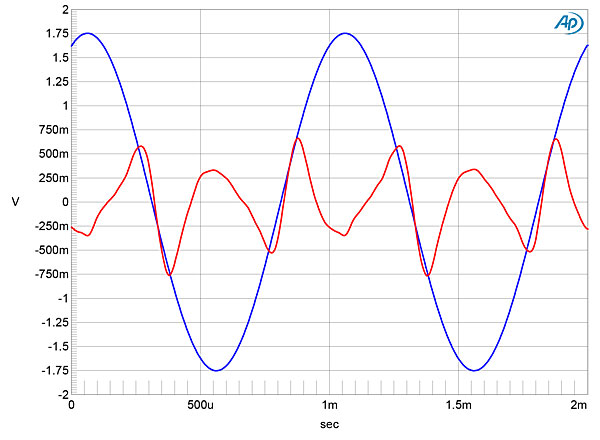
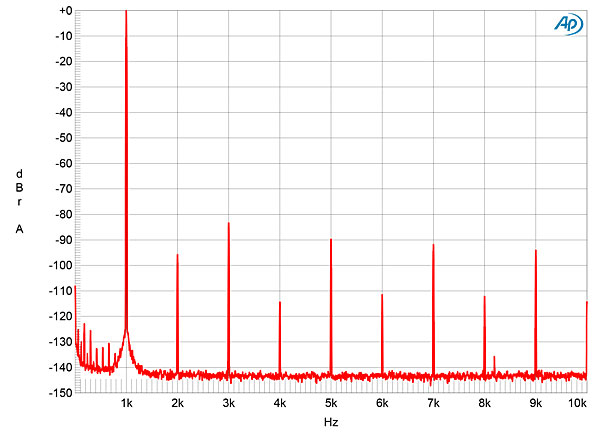
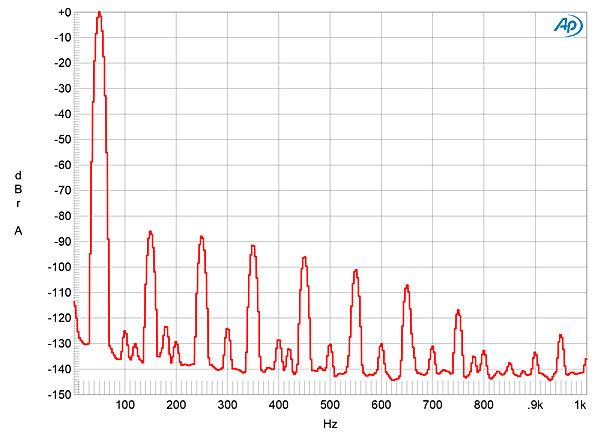
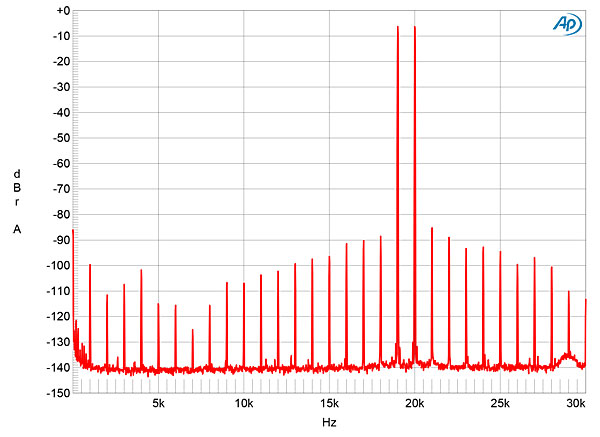
Overall, the Mark Levinson No.536 measured very well, its performance uncompromised by its ability to deliver very high powers into low-impedance loads.—John Atkinson

Excellent review! LG.
Beautiful pics as well.

Thanks for the review Larry. I have found that these amplifiers are incredibly musical and revealing. Whether classical, vocal, or classic rock, they reveal all that is present in the recorded music. I noted a marked improvement of sound in my system when I introduced these in replacement of an ATI Sgnature 6007. Further refinement was achieved with the inclusion of the matching No. 523 preamplifier. Finally, they control my B&W 800 D2's with ease and finesse. I can't say enough about the pleasing sound of this combination.

you do know who makes the amps FOR mark levinson,,,,,right?

...who makes the amps?

...that wouldn't deter me. Given the small quantities to be sold, it wouldn't make much sense to setup their own production. ATI has a very good reputation, builds a lot of product, and has ultra high end experience with its ownership of Theta. It also allows ML to put "Made in USA" on the product. Somehow I doubt "Made in China" or "Made in Mexico" would go over very well. But it's a fact that the majority of Harman brands now build their products outside the US.

...who makes the amps?
To the best of our knowledge, the current generation of Mark Levinson-branded products is manufactured by Mack Technologies, in Westford, MA: http://www.macktech.com/.
John Atkinson
Editor, Stereophile

googoogjoob - some Levinson amps are made by ATI - that's been known for years. But not all ML amps are made by ATI, some amps, including the No. 536, are designed at "Mark Levinson's new facility in Shelton, Connecticut, where all listening tests and QC checks are also performed. Manufacturing is done at Mack Technologies, in Westford, Massachusetts." This is a quote of Mr. Greenhill's as made in Stereophile and on this web site as part of his review of the ML 585. I'm disappointed you missed that detail given it's importance and relativity to your failed inference.

Has anyone asked Mark, himself, what he thinks of the Mark Levinson Amplifiers?
Nelson Pass has plenty to say about the stuff with his name on it, as does B.H.King about that New PS Audio stuff.
Tony in Michigan
ps. I have plenty to say about everything with my name on it as does our JA, for gods sake

...Levinson give a tinker's damn about these amplifiers? He sold his namesake and his ownership of the company he founded many, many years ago and hasn't looked back since. Mark Levinson (the company) has undergone bankruptcy, numerous sales and acquisitions, finally landing in the Harman fold back in 1990. If he didn't like the amplifier, what then? He'd simply be told to go pound sand by the powers that be at Harman. Of course Nelson Pass has plenty to say about his amplifiers, because...well...he actually designed them, and he still owns a majority financial stake in the company known as Pass Labs.

In response to your comments, I went to Google and looked up a few videos of M.Levinson to discover his involvement in Audio today.
Geez, Mark Levinson is competing with his own Company Name, betcha that's a rarity.
Anyway, Hertz Co. seem to have the same Luxury Ideal that Harmon is doing with the Levinson Branding.
Levinson himself seems a capable salesman, his products seem aimed at the Affluent person wanting to be involved with music reproduction at a rather intimate level. ( Hertz stuff seems "tweaky" )
Hertz only offer the "Best" level, no good or better. Priced at $120,000 for the whole darn thing: Speakers, amps, pre-amp/DAC. So, it's a fully Active System capable of playing at 125db.
Nice looking stuff. I could own it but I'd be more likely to buy a Meridian System.
Well, so much for Mark Levinson.
Tony in Michigan
ps. I once considered the Levinson product line for my Retail Shop. None of us liked the stuff so we declined but did accept the Koetsu stuff. It was from Madrigal ( I think ) c.1985ish

As I understand the court rulings between Madrigal and Mr. Levinson, Mark Levinson (the person) is barred from commenting on Mark Levinson (the brand) by legal restraints.

....use ordinary household, 15amp, shared-power for a $30k amp? In your review you mentioned the Torus AVR TOT power conditioner blew its fuse when the 536 maintained a steady 16A draw. Your investment in gear is deserving of the power its demands.
For 12 years I plugged my 336 into its own 15A socket thinking it had what it needed. The rest of my gear had their own 15A lines as well - but all those lines were ultimately shared. It bugged me to the point where one day I got a few hospital grade 20A receptacles and installed 3 separate 20A lines in to my music room. The difference at first, was incredible. It felt like I released a bull into the street where everyone runs for cover. The midrange was so in my face, I had to turn down the volume down a bit and continue my assessment. The sound stage was wider and deeper and the presentation just effortless - less congestion - although I never knew it was congested before. Remember I'm dealing with an older amp by then and its crappy Phillips caps that were replaced 2x under warranty.
Eventually I began to hear more subtle detail, the white against the black if you will, deeper base that had more slam and control and it was tighter. The highs however, were not as warm as I had hoped and some music left me adrift. **My 32 had it's own line and my 360S/37 shared one line (3 total lines).** Surge protected at the box.
I had read here and there in forums that big wall power is what an amp needs, especially class A like your amazing ML2's. I can't believe I'd never done it before. My 336 is due to be recapped. I can't wait to hear it while its running through Cornell Dubilier's. I also wonder what a dedicated 30A line would sound like?
I would be interested to read what a follow up review would find if you plugged those amazing 536 mono blocks into 2 separate 20A lines. Thanks for a thorough review!
PS: **The installation of the 20A lines was a lot cheaper than a big dollar power conditioner. The $20 receptacles were also cryo treated.